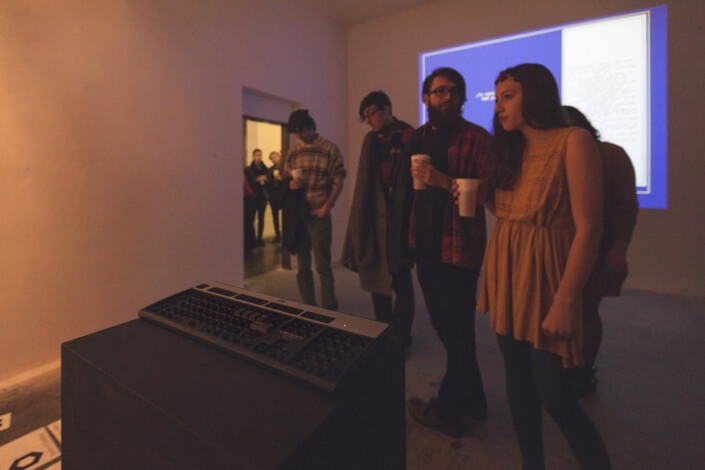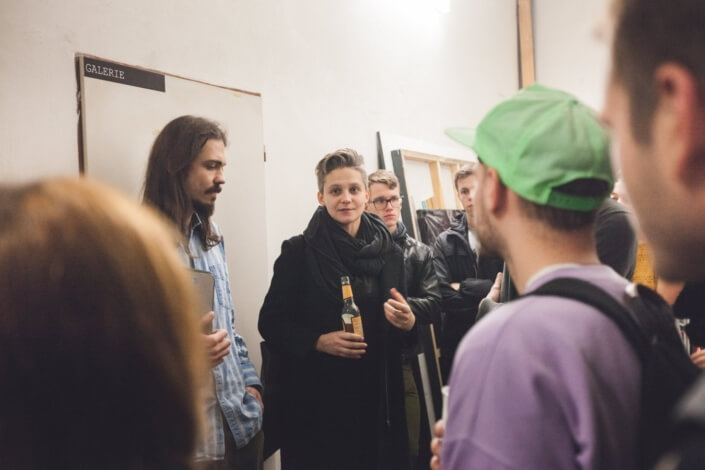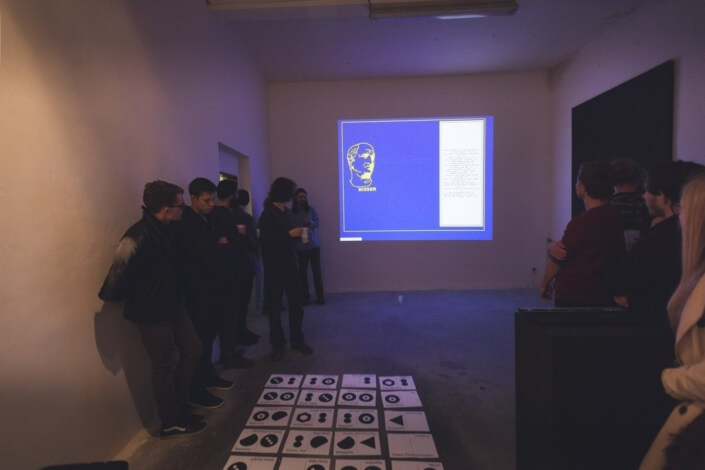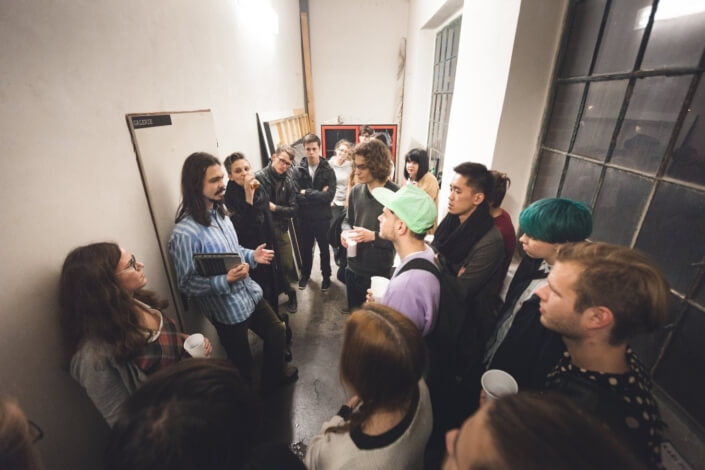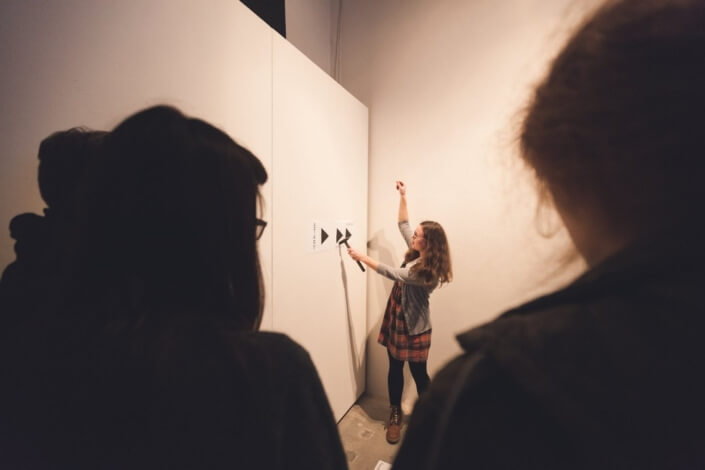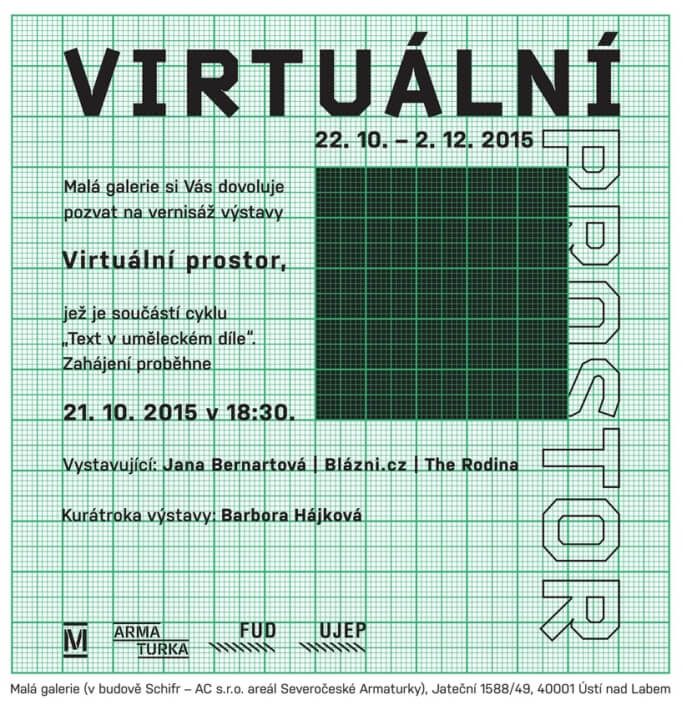Virtuální prostor
Text as an element appearing in artworks has many forms and functions. From an activist stance, which often expresses the political mindset of the creators, we can progress to conceptual works, using text as a tool to achieve their goal to mediate the idea to visual information. Text, especially its placeholders – graphemes, can also stand in opposition to its communicative function – it can be a carrier of aesthetics. And, of course, the text, which serves to analyze and interpret the very function and form of language and communication.
The artworks presented in the Virtual Space exhibition link two concepts – text and virtuality – that many of us work with for up to several hours a day in our everyday lives. The preservation of text has transformed from the first stone stelae into today’s form of Facebook and Twitter posts, hashtags, pop-ups, and sms. Niels Brügger, a Danish professor of web history, states that in 2000, 75 % of stored data was in analogue form. By 2007, that number had narrowed to 7 %, and by 2012, only 2 % of all stored data was on paper, photographs, vinyl, tapes, and other analogue forms. Can characteristics such as the permanence and validity of the text be observed in this environment, or are the messages becoming diluted and losing their value due to digital media?
The artworks included in the Virtual Space exhibition respond counterproductively to this phenomenon. In Cicero project, the group Blázni.cz uses digital interfaces to generate wisdom. It uses a randomly generated pseudo-Latin „lorem ipsum“ typographic text, from which it translates a new sentence into the Czech language every few seconds and renders it as a meme image for viral distribution. The Cicero project is also a reductio ad absurdum of the idea that the meaning of a work is a matter for the recipient. If this is the case, we don’t need authors. Cicero is a conceptualist.
Similarly, Audio Pioneers by Jana Bernartová speaks like real people. There have been cases of users whose close friend was Siri, the personal assistant, and navigator that is part of Appel’s software. Audio Pioneers, however, are on a higher intellectual level. They generate texts about generative art. But if you listen closely, you’ll find that the texts are the product of software (or a mad scientist who doesn’t know sentence composition).
In opposition to these technical artefacts, a work produced by The Rodin is directly created in response to the theme of the exhibition. The entire print scheme is a processual piece and is based on email communication between the curator and the art group. Based on the sent instructions, the curator became the executor and, consequently, the co-author of the work, without knowing the form and overall message of the work until the last moment.
The exhibition in Malá Galerie presents only a small section of artistic approaches that deal with text in virtual space. Other artists connect the above-described issues with other phenomena such as religion or personal relationships. In the future, the overall picture of text in virtual space could be presented on a larger scale than Malá Galerie (Small Gallery).
The exhibition will also be complemented by the additional programme Virtual Space in Text on 12 November 2015. A reading by Luboš Svoboda and a lecture by Palo Fabuš will take place in the café, which is part of the Armaturka cultural factory. Last year Svoboda published his debut collection of poems, We Look Like We’re Waving, for which he was nominated as a finalist for the Jiří Orten Award. In his texts, he portrays everyday acts, conceived in a minimalist way, pared down to the essence of the matter. Among other things, he reflects on the present in a way that makes it clear that our thinking and self-determination are slowly shifting to the virtual world.
Graphic design: Barbora Halamová and Michaela Hrabová
Virtual Space
Jana Bernartová, Blázni.cz, The Rodina
Malá galerie, Ústí nad Labem
20. 10. – 2. 12. 2015
Curator: Barbora Hájková

